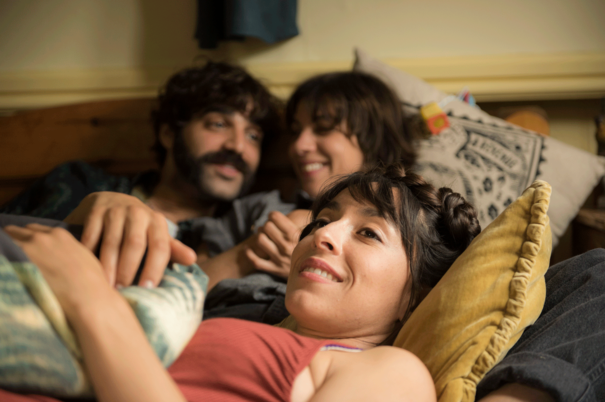When Hope Needs to be Anchored
Kattia Barrientos

Anchor and Hope
ANCHOR AND HOPE (2017), by Spanish director Carlos Marqués-Marcet, tells the story of a couple made up of Eva (Oona Chaplin) and Kat (Natalia Tena), who lead an easygoing life on a houseboat on the canals of London, until the death of their cat revives Eva’s wish to be a mother.
For Kat it is a sensitive issue, but when her friend Roger (David Verdaguer) arrives from Barcelona, she feels trapped, as Eva convinces him to act as a sperm donor.
The conflict formulated by the Spanish director could be expressed in this way: in an increasing diverse and inclusive society, is it necessary to maintain traditional expectations regarding motherhood, family, and social roles? Whereas Kat has doubts about her lifestyle, Eva and Roger see no problem in combining it with more traditional elements.
The film as a whole is weakened, however, by the stereotypical depiction of the characters, based on the archetype of the “gay couple” (regardless of gender) in which one member corresponds to what is assumed to be “manly” and the other to what is considered “feminine.” Thus, in spite of their alternative lifestyle and the presence of picturesque secondary friends, their dilemma in the end is more traditional than might be expected.
Nevertheless, ANCHOR AND HOPE is a well-told story, with a humor derived from the complicity achieved by the main actors. It invites us to put our feet squarely on the ground (Tierra Firme is the Spanish-language title of the film) and reflect on the fact that anchoring our hopes in another person cannot be healthy. It lacks the depth, however, to take us any farther than that.

